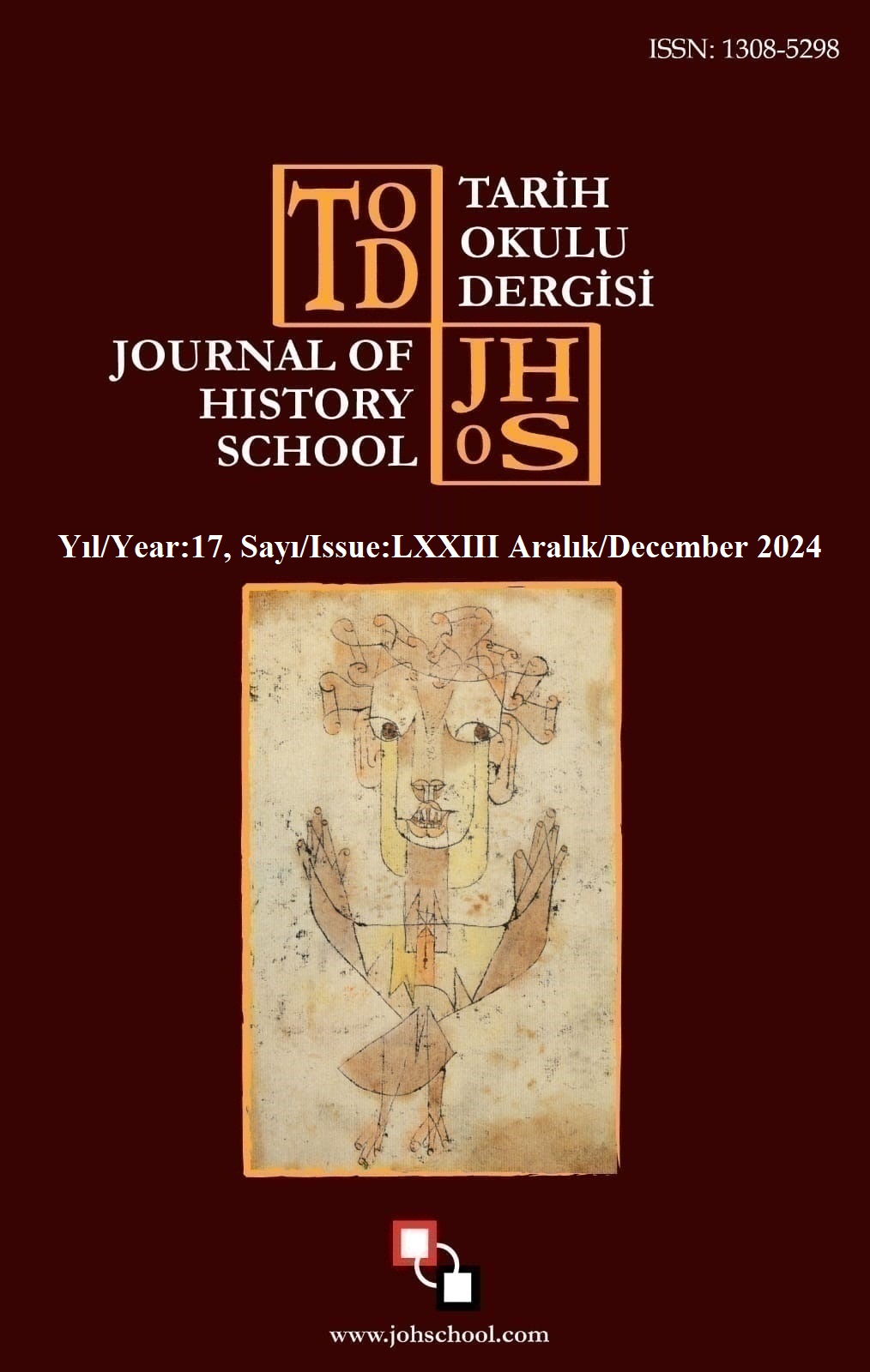BÜYÜK SELÇUKLULARIN SON DÖNEMLERİNDE HALİFE-SULTAN ÇEKİŞMESİNİN HAÇLILARLA YAPILAN MÜCADELEYE ETKİSİ: MELİK MAHMUD DEVRİ VE SONRASI
Author :
Abstract
Bu çalışma, Büyük Selçuklu Devleti’nin son dönemlerinde, sultanlar ile Abbâsî halifeleri arasında yaşanan siyasi çekişmelerin, aynı döneme tekabül eden Haçlı işgallerine karşı Müslümanların verdiği mücadeleye etkisini ortaya koymak amacıyla hazırlanmıştır. Çalışmanın girişinde Büyük Selçuklu Devleti ile Abbâsî halifeleri arasında ilk siyasi münasebetlerin kurulması, gelişimi ve nihayet çalışmaya konu olan Sultan Sencer’in saltanat dönemine kadar olan gelişmeler özetlenmiştir. Yapılan özetlemenin ardından uygun başlıklarla önce halife-sultan çekişmesinin dini-siyasi dayanaklarına değinilmiş daha sonra da çalışma konusuyla ilgili detaylı bilgilere geçilmiştir. Çalışma, Sultan Sencer’in saltanat yılı olan 1118’den başlayıp aynı sultanın Oğuzların eline esir düştüğü 1153 tarihine kadar olan bazı olayları kapsamaktadır. Abbâsî halifelerinin “dünyevî iktidarlarını” yeniden kazanmanın gayreti içinde oldukları bu süreçte özellikle Irak Selçuklu hükümdarlarından Melik Mahmud ve Melik Mesud öne çıkan sultanlar olmuştur. Gerek Sultan Sencer’in gerek anılan diğer sultanların Abbâsî halifeleri ile olan inişli-çıkışlı ilişkilerinin Haçlılarla yapılması gereken mücadeleyi olumsuz etkilediği açıkça görülmüştür. Çalışmada ana kaynaklarla birlikte tetkik eserlere de başvurulmuştur. Halife-sultan çatışmalarının yaşandığı sırada özellikle ana kaynaklarda çoğu zaman rastlanmayan Haçlılarla yapılan mücadeleye etki bağlantısı, tetkik eserlerlerden yararlanılmak suretiyle kurulmaya çalışılmıştır. Belirlenen süreçte daha çok bütün İslam dünyasının büyük çoğunluğunu etkileyebilecek düzeyde olaylara odaklanılmıştır. Metin içerisinde kronolojik sıralamaya uygun bir şekilde önce halife-sultan arasındaki çekişmelere kısaca değinilmiş, ardından bu çekişmenin Haçlılarla yapılan mücadeleye etkisinden söz edilmiştir.
Keywords
Abstract
This study was prepared to reveal the impact of the political conflicts between the Seljuk rulers and the Abbâsîd caliphs in the last periods of the Great Seljuk State on the struggle of Muslims against the Crusader invasions that coincided with the same period. In the introduction of the study, the establishment and development of the first political relations between the Great Seljuk State and the Abbâsîd caliphate and finally the developments until the reign of Sultan Sanjar, who is the subject of the study, are summarized. After the summary, first the religious-political basis of the caliph-sultan conflict was mentioned with appropriate headings, and then detailed information about the subject of the study was given. The study covers some events starting from 1118, the year of Sultan Sencer's reign, until 1153, when the same sultan was captured by the Oghuzs. In this process, where the Abbâsîd caliphs were trying to regain their "world power", Melik Mahmud and Melik Mesud, especially the Iraqi Seljuk Rulers, became prominent sultans. It has been clearly seen that the up-and-down relations of both Sultan Sencer and the other mentioned sultans with the Abbâsîd caliphs negatively affected the fight against the Crusaders. In the study, along with the main sources, research works were also used. An attempt has been made to establish the connection between the Caliph-sultan conflicts and the struggle with the Crusaders, which is often not found in the main sources, by making use of research works. In this determined process, the focus was on events that could affect the majority of the Islamic world. In the text, in accordance with the chronological order, the conflicts between the caliph and the sultan were briefly mentioned, and then the effect of this conflict on the struggle with the Crusaders was mentioned.





